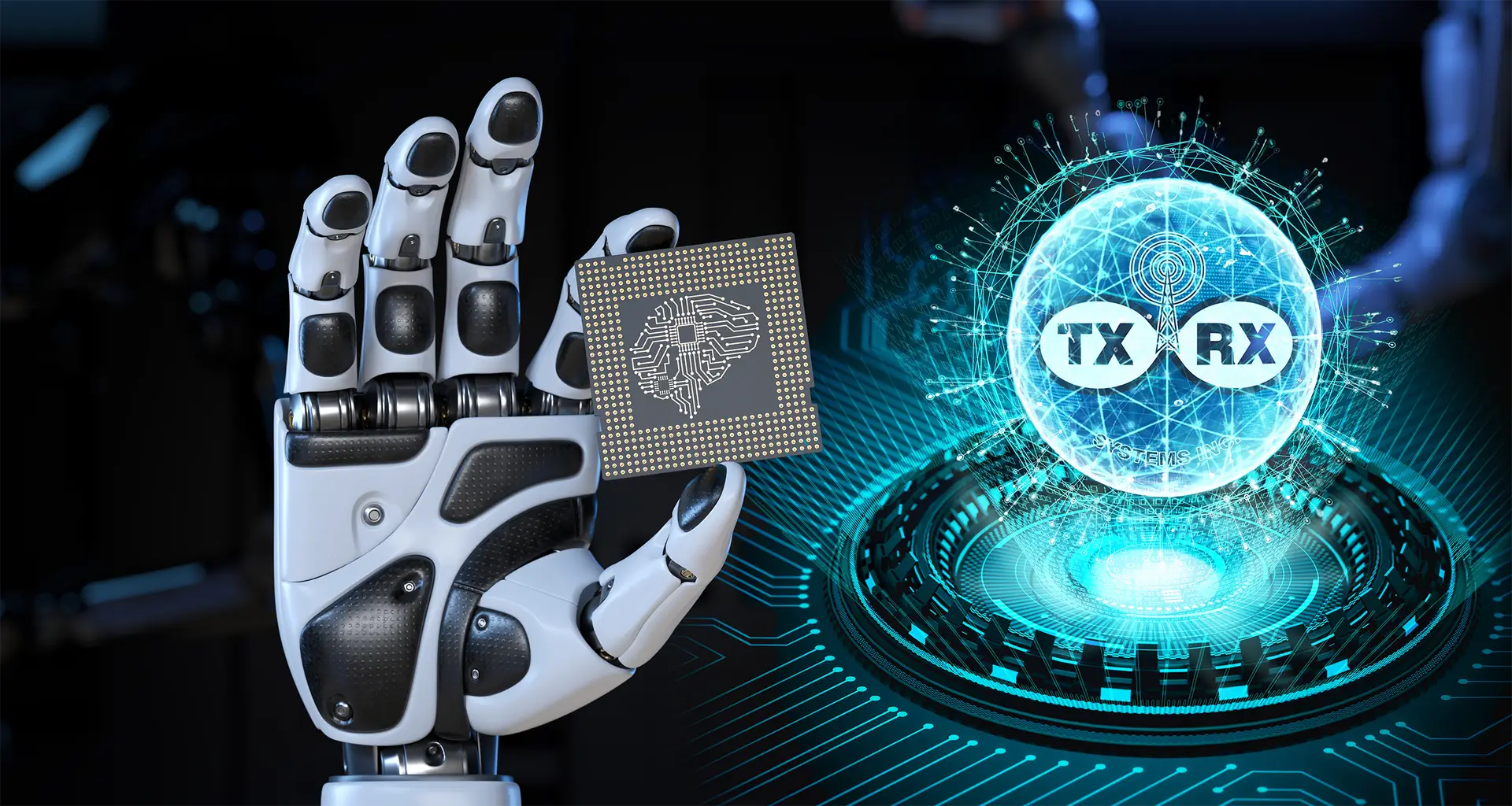AI and RF Engineering: What’s Next for TX RX Systems?
Artificial intelligence (AI) is leading the charge in transforming traditional RF engineering practices while ushering in a new age for industries across the globe. The integration of AI is no longer just a possibility. It’s a necessity.
Understanding the implications of AI in RF engineering and how it affects the future of TX RX Systems can create a seamless transition during this technological shift. RF engineering can benefit from AI-driven advancements. This is especially true in areas such as remote monitoring and network optimization. With the industry adapting to these emerging trends it is essential to understand how AI and machine learning can transform traditional RF technologies and lead to innovative and more efficient systems.
The Role of AI in Optimizing RF Networks
AI’s potential to optimize RF networks lies in its ability to analyze huge amounts of data quickly and accurately. Traditionally the optimization of wireless networks, such as 5G, involved a lot of manual effort to design and configure parameters. This process can be time-consuming and error-prone. It can be particularly burdensome when dealing with complex RF challenges like interference and signal attenuation. However, most obstacles can be overcome by optimizing advanced AI technologies.
This is where AI plays a pivotal role. These algorithms can detect patterns and anomalies within wireless signals which allow for real-time adjustments to enhance network performance. For instance, machine learning techniques can be used to predict interference patterns. They then automatically adjust frequency allocations and dynamically reallocate resources in response to changing user demands, mitigating the impact of fluctuations while ensuring networks can adapt to varying conditions. This level of automation enables more reliable communication networks, especially in high-demand areas where system uptime is critical.
Machine Learning and Deep Learning in RF Engineering
Machine learning and deep learning are two key AI techniques that are revolutionizing RF engineering. Machine learning models are particularly effective in classifying and predicting signal behavior which can lead to more accurate RF designs. Deep learning, with its ability to process complex datasets, offers even greater potential for optimizing RF systems. Deep neural networks can analyze RF signals in milliseconds, outperforming traditional methods that rely on iterative algorithms.
For TX RX Systems, the integration of these AI technologies will enhance system capabilities in areas like signal detection, classification, and interference mitigation. By using AI to optimize signal propagation and reduce power consumption, TX RX Systems can improve the efficiency of their RF equipment. Thus making it more robust and adaptable to various environments. Moreover, these technologies offer significant improvements in reducing computational demands and energy usage. Both of which are critical considerations for modern RF systems.
The AI-Driven Future of Remote Monitoring
One of the most promising applications of AI in RF engineering is remote monitoring. The demand for wireless communication continues to grow and so does the need for efficient network management. With billions of IoT devices connecting to wireless networks everyday, the ability to manage and optimize these networks is crucial.
More homes and office buildings are smart-enabled. This means they can be controlled from a smartphone where AI can manage resources and analyze data. This allows it to make suggestions on how to conserve resources or set temperatures based on the occupants’ preferences.
AI can use these same devices for preventative maintenance by detecting anomalies in operations and predicting potential failures. This technology also plays a role in detecting unauthorized usage or interference from external sources which can compromise network performance. For TX RX Systems, adopting AI-driven remote monitoring tools will allow for more precise control over frequency allocations and help prevent disruptions.
AI’s Impact on RF Component Design
Another area where AI is making strides is in RF component design. AI can be used to automate the design of antennas, filters, and other RF components which results in more efficient and cost-effective solutions. RF engineers can also simulate and optimize component designs before they are physically built. This reduces the time and cost associated with traditional design methods.
While previous integrations of AI into electronic design automation (EDA) tools often fell short. Now, generative AI is proving to be a game changer. Historically, hardware design has been hampered by tools that forced engineers to focus on tedious tasks. Rather than focusing on the creative aspects of the design, these tools demanded enormous attention to tasks like library management and component selection.
Chat-based AI assistants enable engineers to streamline their component design process. When an engineer contextualizes an entire project, these AI systems can provide a tailored recommendation. This allows the engineers to bypass much of the preliminary research that typically consumes valuable time. Thus enhancing overall productivity.
Incorporating AI into RF component design allows for the development of systems that can adapt easily to their environments. For example, AI can help create antennas that automatically adjust their radiation patterns based on environmental factors such as extreme wind or heat. This is particularly useful for mission-critical communication systems used by first responders.
Conclusion
The future of RF engineering is tied to the advancements in AI and machine learning, but it can also be a double-edged sword. AI-enabled engineering can yield substantial results and benefits that can help companies accomplish their goals with fewer resources. It also allows human engineers the freedom to focus on more complex and creative endeavors. However, there are fears regarding job displacement and the elimination of livelihoods.
TX RX Systems can stay ahead of the curve by integrating these cutting-edge technologies into remote monitoring and component design to network optimization and IoT integration. AI is set to transform the RF landscape, unlocking new possibilities for faster, more reliable, and more secure communication networks.
Explore how our innovative solutions can transform your RF engineering practices and empower your operations. Contact us today to learn more about how we can support your journey into the future of AI-driven RF technology.

